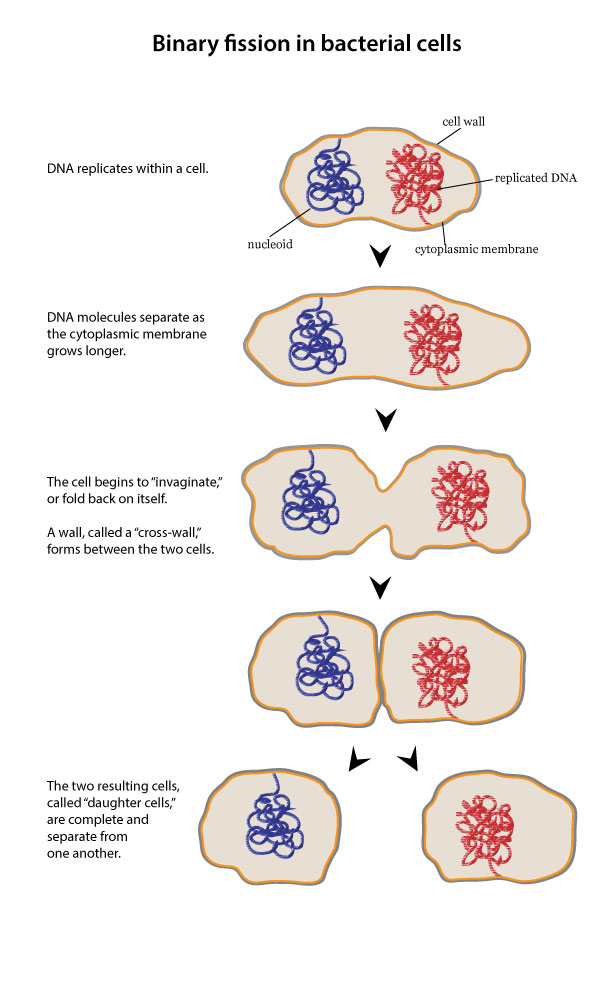
Members of a population of M. xanthus can alternatively coordinate their activities and even exhibit a strategy in which the population organizes into a “bacterial wolfpack” to hunt down, kill and consume large numbers of prey bacteria ( Berleman and Kirby 2009). Cells can live as independent operators, seeking out and finding prey bacteria to lyse and consume. Myxobacteria are motile, typical-looking, rod-shaped bacteria that live in the soil or in detritus. Members of the myxobacteria (phylum Proteobacteria), such as Myxococcus xanthus, exhibit multicellular behaviors for finding prey and for dispersing myxospores when nutrients become limited ( Bretl and Kirby 2016 Keane and Berleman 2016).

In these patterns of development, the propagules (usually spores) could be considered the “germline” of a population or colony of cells. A number have independently evolved developmental processes that allow cells to specialize, with some members of a population transforming into highly dispersible propagules. Several, perhaps less-familiar bacterial models have communication systems used to coordinate multicellular behaviors and regulate alternative reproductive programs ( Angert 2005 Claessen et al. All genetic material is preserved in this process. Reproduction culminates in division of the cytoplasm at the midcell to produce two equivalent and self-sufficient offspring cells, each with a complete complement of the parent cell’s genomic material. In binary fission, a bacterium grows to about twice its starting size, while it replicates and then segregates copies of its genome to distal parts of the cell. That is entirely reasonable because most of our models for bacteriology use binary fission for reproduction. Most scientists do not think about bacteria when considering germline dynamics.

Populations of Bacteria That Exhibit a Germline/Soma Division type B populations bypass this loss by the coordinated release of DNA from dying mother cells and recombination of these fragments in genome copies within newly emerged offspring cells. Since not all copies of the genome are inherited, Epulopiscium populations run the risk of losing genetic diversity acquired in the somatic genome copies.

A limited number of genome copies is passed on to each offspring, but most copies remain in the mother cell and are needed to support metabolism of the mother cell and growing offspring. These highly polyploid bacteria reproduce solely by the formation of internal offspring. type B maintains tens of thousands of copies of its genome throughout its lifecycle. By employing mechanisms common to others in the Firmicutes, the coordinated timing of mother-cell lysis, offspring development and congression may facilitate the substantial recombination observed in Epulopiscium sp. Multilocus sequence analyses revealed that recombination is important to diversification in populations of Epulopiscium sp. type B populations face several bottlenecks that could endanger their diversity and resilience. type B is a strict anaerobe and while it is an obligate symbiont, its host has a facultative association with this intestinal microorganism. Consequently, chromosomes take on a somatic or germline role. And yet, even in late stages of offspring development, mother-cell chromosome copies continue to replicate. type B mother cell is directly inherited by its offspring cells. Only ∼1% of the genetic material in an Epulopiscium sp. do not use binary fission but instead produce multiple intracellular offspring. Each of these giant (up to 0.6 mm long), cigar-shaped bacteria contains tens of thousands of chromosome copies. Epulopiscium spp., and their close relatives within the Firmicutes phylum, are intestinal symbionts of surgeonfish (family Acanthuridae). However, some bacterial lineages employ diverse reproductive patterns that require management and segregation of more than two chromosome copies. All genetic material is passed on to offspring, including new mutations and horizontally acquired sequences. In these models, complete chromosome copies are segregated with great fidelity into two equivalent offspring cells. Most studies of bacterial reproduction have centered on organisms that undergo binary fission.


 0 kommentar(er)
0 kommentar(er)
